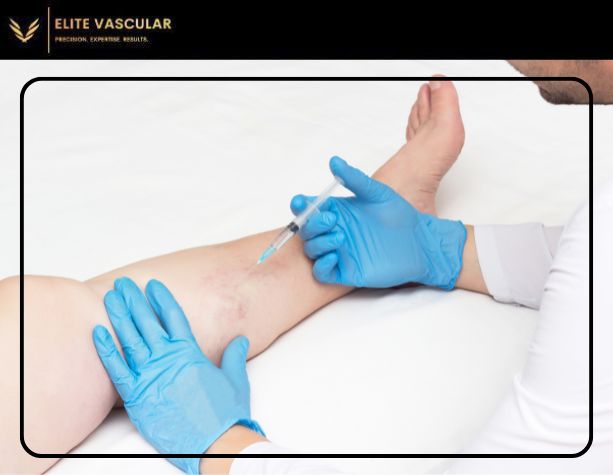- admin
- 0 Comments
Condition of veins like varicose disease is one of the conditions that affect so many people across the globe, discomfort and cosmetic issues experienced. These two methods have become common and such treatments as Varithena and sclerotherapy aim to deal with such issues. Despite the fact that both strategies are meant to deliver more or less the same outcomes, it is important to know any of these differences so that you can make an educated choice. In this article, we shall study Varithena treatment as well as sclerotherapy treatment in detail focusing on their benefits, how they are done, and how effective they are.
Understanding Varithena
Varithena is a form of sclerotherapy that involves the use of foam to obliterate abnormal veins. This foam is used to target/herniated veins directly for the purpose of thrombosis within the vessel which causes the vessel to collapse and is eventually resorbed. It is especially useful for the treatment of more difficult and larger veins.
How Varithena Works
The foam used in Varithena disperses as it expands to occupy the vein; coverage is improved as opposed to liquid forms of treatment. It works well to flatten and treat those hard to reach twisted and bulged veins that other techniques may miss. However, patients are usually able to tolerate the procedure and pain is rarely experienced during the treatment, if at all, no anesthesia is needed.
Advantages of Varithena
Quick Recovery Time: Normally, all the patients under go through this therapy, it will be highly unlikely that he/she will undergo more than one day of feeling quite incapacitated from their visits to the clinic.
- Minimal Scarring: This is because, Varithena does not require the performing large incision cuts on patients hence stitches are not required as it is a non-surgical management of the condition.
- Highly Efficient for Bigger Veins: Varithena is quite more appropriate for larger and difficult veins where other methods of treatment may not be so beneficial.
Sclerotherapy Understanding
Sclerotherapy is another usual vein procedure that utilizes liquid sclerosant in important venous treatment. This technique is usually applied in the treatment of smaller veins including spider and small varicose veins. The sclerosant is in most instances in liquid form, and it has to be injected through the skin and directly inside the vein targeted for treatment.
Sclerotherapy What It Is and How It Works
As already mentioned sclerotherapy involves the injection of sclerosant into the vein which is to be treated using a thin needle. The lining of the vein gets irritated, which in this goes to cause a lot of inflammation within the vein walls, which will ultimately lead to collapse of the vein and resorption of the tissues in due time. The procedure is fast and can be done in a physician’s clinic.
Sclerotherapy Benefits
- Treating Small Veins in Kids: Sclerotherapy is effective for all small varicose and spider veins in children also.
- Compliancy Considerations: It does not involve any or very minimal pain and therefore no anesthesia are needed.
- Time Tested Practice: Sclerotherapy, for instance, has been practiced for more than 20 years and the results have been impressive.
Varithena vs. Sclerotherapy: Key Differences
Though varithena and sclerotherapy is effective for vein treatment procedures, they target different classes of veins. Larger twisted veins are usually treated with Varithena whereas, lower grade sclerotherapy is reserved for simple interstitial veins.
- Procedural Duration: Procedures that contain Varithena are a little longer than two simple sclerotherapy procedures since the foam enhancement takes additional time and procedure time for the sclerotherapy is much shorter.
- Recovery: Both procedures have a quick recovery period, however, varithena may be more advantageous to those with larger venous network.
- Effectiveness: Varithena is effective in treating large veins while sclerotherapy is good for smaller and superficial veins.
Which Treatment is Right for You?
Whether to use varithena or sclerotherapy will depend upon size and severity of the vein condition you have. If you have prominent bulging veins varithena may give best outcomes in healing them. However, when you need treatment for smaller spider veins or even minor varicose veins sclerotherapy may be the appropriate treatment.
Conclusion
Great treatment solutions are offered in both Varithena and sclerotherapy treatment for varicose veins. An individual’s choice with these two will mainly depend on the size of the veins and whether or not they have any structural complexities. A vein specialist will advise you on the effective treatment modalities to adopt depending on your condition.
